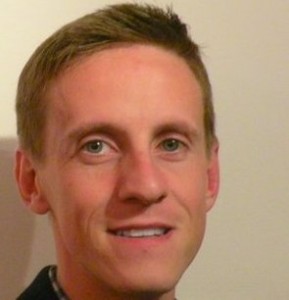 Chartered Physiotherapist, Dr Derek Griffin, on the problem 0f Achilles pain in athletes and why a “hands-off”, exercise-based approach is best…
Chartered Physiotherapist, Dr Derek Griffin, on the problem 0f Achilles pain in athletes and why a “hands-off”, exercise-based approach is best…
The Achilles tendon is a remarkable structure and must tolerate up to 12 times your bodyweight during sprinting.
Tendons can be likened to “springs” reducing the need of muscles to generate force and they contribute significantly to power production in humans.
Achilles tendinopathy is a common injury in sports and activities involving running and jumping. The diagnosis should be confirmed by a healthcare professional as other problems can mimic the symptoms. Pain often increases with activities that load the tendon including walking, running, jumping etc.
This article discusses tendon pain that is of gradual onset or pain that develops after activity. Sudden onset pain during activity can signify a partial or complete tear of the Achilles tendon and would require a different treatment approach.
1. Tendons don’t like sudden change!
The Achilles tendon becomes painful, most commonly after a sudden change in activity or training loads. For example, a runner who decides to incorporate hill sprints into his/her training programme and starts too aggressively.
This can lead to a “reactive” tendinopathy, which is a reference to the tendon “reacting” to the sudden change in load. This can occur without any breakdown in the tendon and in some ways can be seen as an early “warning” sign which the athlete needs to take note of.
Athletes also need to be cautious after periods of extended rest (due to injury, illness etc.) when returning to activity. Rest or inactivity decreases the ability of the Achilles tendon to tolerate load and relatively small increases in load thereafter can be sufficient to trigger a reaction.
2. Don’t blame pronation!
Recent scientific evidence suggests that diabetes, high cholesterol, increased BMI and high blood pressure may increase one’s risk of developing Achilles tendinopathy.
The common assumption that foot pronation is associated with Achilles tendinopathy is not supported by the scientific research. In fact a recent study published in the “British Journal of Sports Medicine” showed that foot orthotics provided no additional benefit to a strengthening programme for Achilles tendinopathy.
Instead, calf muscle weakness and restrictions in ankle range of motion (or excessive flexibility) are more important to consider.
3. How is the problem managed?
The treatment for Achilles Tendinopathy will depend on the stage of the problem. In general, complete rest is never recommended and is often detrimental to the tendon.
Instead a targeted and tailored exercise/loading programme should be commenced and supervised by a clinician experienced in managing tendinopathy. In situations where the tendon pain is the result of doing “too much too soon” etc., it is important to identify and reduce the “abusive” loads quickly.
This will allow the tendon to revert back to its original state. For people with ongoing pain or longer duration symptoms, a progressive strength programme is essential. The design of the programme will differ from individual to individual with strength, strength-endurance and power being restored to the lower limb as required.
The programme will need to be designed by a clinician experienced in managing tendon problems. In addition, research has consistently shown that poor sleep, anxiety, stress and poor mental health also increase our pain sensitivity. Therefore it is important to also address these factors.
4. Stop Stretching!
“Adjunct” therapies (dry needling, foam rolling etc.) are often used to alleviate symptoms but should never be used as the sole treatment for Achilles tendinopathy. Exercise and a progressive strengthening programme is the ONLY way to improve the health of a tendon. Stretching is generally not recommended for Achilles pain.
It can increase compression of the tendon resulting in increased pain. Medical factors (diabetes, high blood pressure, increased BMI etc.) must be addressed as part of a comprehensive programme and this may require liaising with your GP.
Summary
In summary, Achilles tendinopathy is a common complaint in both sporting and non-sporting populations. Managing the load placed on the tendon together with a gradual loading/strengthening programme is the cornerstone of effective treatment.
It is important to acknowledge that not all tendon pain is the same and different stages of the problem require a different management approach. As a result, no “recipe” programme is recommended.
It is important to seek professional advice to determine how best to manage the problem. The information in this article does not replace medical advice by a qualified healthcare professional.
• Dr Derek Griffin is a Chartered Physiotherapist and academic with expertise in the management of chronic pain disorders and running-related injuries. He holds a PhD in Physiotherapy, which was funded by a prestigious scholarship awarded by the Irish Research Council. He is currently working as a lecturer in Physiotherapy at the University of Limerick and consults at Tralee Physiotherapy Clinic on a part-time basis. He can be contacted by telephone at 066-7128863 (Clinic tel no.) or by email at derekgriffinphysio@gmail.com.












